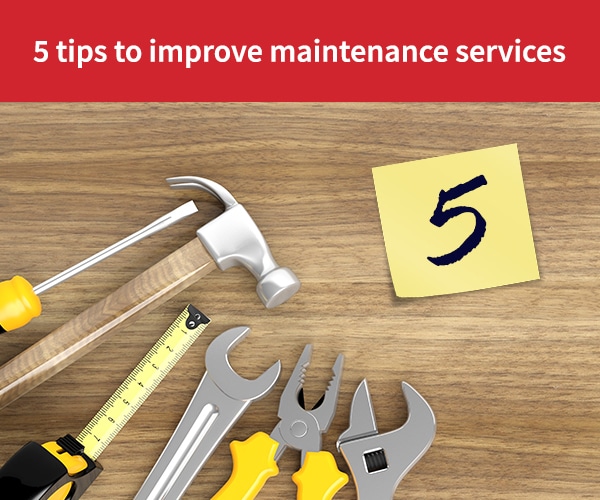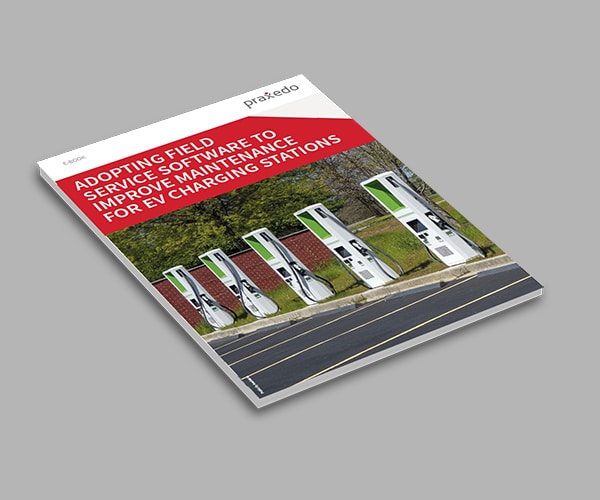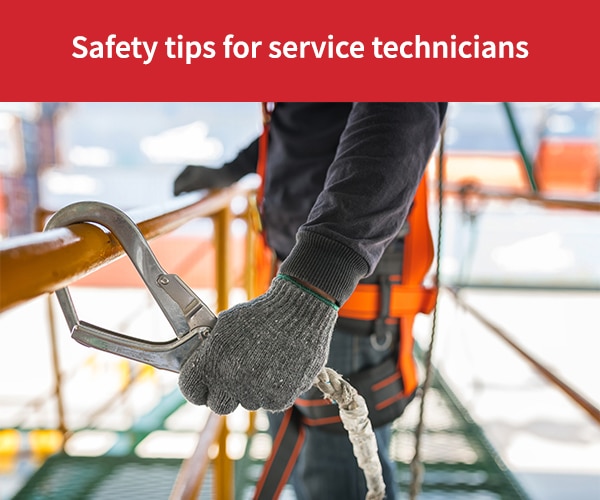
- Customer Satisfaction
- Maintenance
- Productivity
- Productivité
- Satisfaction Client
- Service
5 ways to improve the quality of maintenance services
There are any number of quality standards, certifications, and methodologies you can follow to improve the quality of maintenance services. Here’s an overview of 5 that will help you to increase customer satisfaction and productivity.
ISO 9001 is the most popular quality standard for maintenance
With more than one million certificates issued worldwide, the ISO 9001 standard is the most widely followed quality management standard. This standard aims to help companies implement continuous improvement processes that help them meet customer expectations and increase customer satisfaction. ISO 9001 is a generic standard so any company, including maintenance companies, can apply it to their business. It provides best practices and methodologies that help maintenance companies improve performance by increasing quality, safety, and productivity while optimizing costs. The standard is available in different versions to meet the specific requirements of industries such as automotive (ISO/TS 16949) and aeronautics (NF EN 9100).
ITIL improves IT support
ITIL— formerly an acronym for Information Technology Infrastructure Library — is a set of detailed practices for providing IT services. The recommendations were originally issued by the UK Office of Government Commerce (OGC) and Version 4 is scheduled to be released in the first quarter of 2019. Some of the most-used ITIL practices are those related to operational management of support services, including incident management, problem management, change management, configuration management, and service level management. ITIL certification applies to individuals, not organizations. The logical step for organizations looking to demonstrate they follow the types of best practices defined by ITIL is to evolve toward the ISO 20000 standard for information technology service management (ITSM). ITSM is a broader approach that incorporates ITIL best practices as well as those of Control Objects for Information and Related Technologies (COBIT), which focuses on information systems governance, The Open Group Architecture Framework (TOGAF), which focuses on corporate computer architectures, and Six Sigma process optimization.
Lean maintenance improves operations
Lean management is a methodology for continuous process improvement. Popularized by Toyota in Japan, this methodology eliminates inefficiencies and waste that impede performance. Lean processes identify unnecessary tasks to help improve quality and customer satisfaction while reducing costs. Improvements include streamlining workflows, reducing wait times and optimizing spare parts stocks. To create this virtuous circle, lean management upends traditional hierarchies to give more responsibility to those with hands-on experience. As experts in their jobs, these are the best people to analyze operational issues and suggest improvements. The goal is to improve job satisfaction by giving people the opportunity to enhance operations. Similar to the agile methodologies that are followed in the software development world, lean is based on visual management. In the Obeya — “large room” or “war room” in Japanese — team members have daily standing meetings to discuss the progress of tasks that are written on post-it notes and displayed on a wall. As tasks progress, the notes are moved to symbolize completed work. Lean management also has successful variations, including lean maintenance, which aims to continuously improve maintenance services, and lean IT, which, as the name suggests, applies to IT services, helpdesk and application support services.
TPM improves production
Total Productive Maintenance (TPM) is an extension of lean methodologies. Like lean, TPM originated in Japan at the beginning of the 1970s and is associated with a car industry that was figuring out how to compete in a global marketplace. As Christian Hohmann, an expert on the subject, points out on his website, each word in the TPM acronym is important. First, productive. With TPM, the idea is to ensure the right maintenance tasks occur to keep production running at all times. As a result, TPM aims to resolve the issues associated with unplanned production shutdowns and lack of qualified personnel. The word total is important because all aspects of a maintenance service must be considered. And, as in lean maintenance, each aspect must be considered in the context of the overall organization. Involving technicians is seen as a real opportunity to strengthen their commitment and increase their skill level. To measure progress, TPM is based on a single indicator: overall equipment effectiveness (OEE). The OEE is the percentage of time a machine is actually manufacturing quality parts compared to its theoretical maximum capacity to do so. As a result, OEE highlights issues related to quality (rejected parts) and equipment configuration.
Certifications such as APSAD improve security
In France, APSAD certification verifies the quality of security measures, whether those measures are intended to prevent a fire or malicious acts. Its broad application means it applies to installers of a wide variety of systems, including access control, video surveillance, intrusion detection, fire extinguisher and smoke extraction systems. The voluntary certification was developed by the insurance industry in France and certifications are issued by the country’s National Center for Prevention and Protection. APSAD’s quality standards are based on risk analysis, the installation itself, customer management and aftermarket service. Different certifications are issued depending on the equipment type:
-
Intrusion detection (R81)
-
Fire detection (R7)
-
Remote Monitoring (R31, I31)
-
CCTV (R82)
To confirm compliance with the quality requirements in its specifications, the national organization conducts 1-2 day audits annually. For example, the organization will verify that an installation meets the specifications and was executing according to the defined rules. For professionals working on electronic security systems, APSAD recommends at least one preventive maintenance visit per year. With this on-site visit, the installation can be tested to ensure it is functioning properly and still meets the needs of the premises. When it comes to curative maintenance, APSAD recommends service times of 24 to 72 hours. With APSAD certification, companies have independent validation of their skills and know-how. Today, only 5% of electronic security installers are APSAD certified. However, with many large companies making APSAD a requirement, certification is becoming increasingly essential.
Our similar articles.
-
- Technician
- Productivity
- Maintenance
- Technologies
Using virtual reality to recruit and train service technicians
March 5, 2019 -
- Productivity
- Secteurs d’activité
Ebook: Adopting Field Service Software to improve maintenance for EV Charging Stations.
June 17, 2021 -
- Technician
- Maintenance
- Gestion d’interventions
- Security
- Application mobile
- Technicien
Ensuring the safety of maintenance technicians
November 25, 2020


